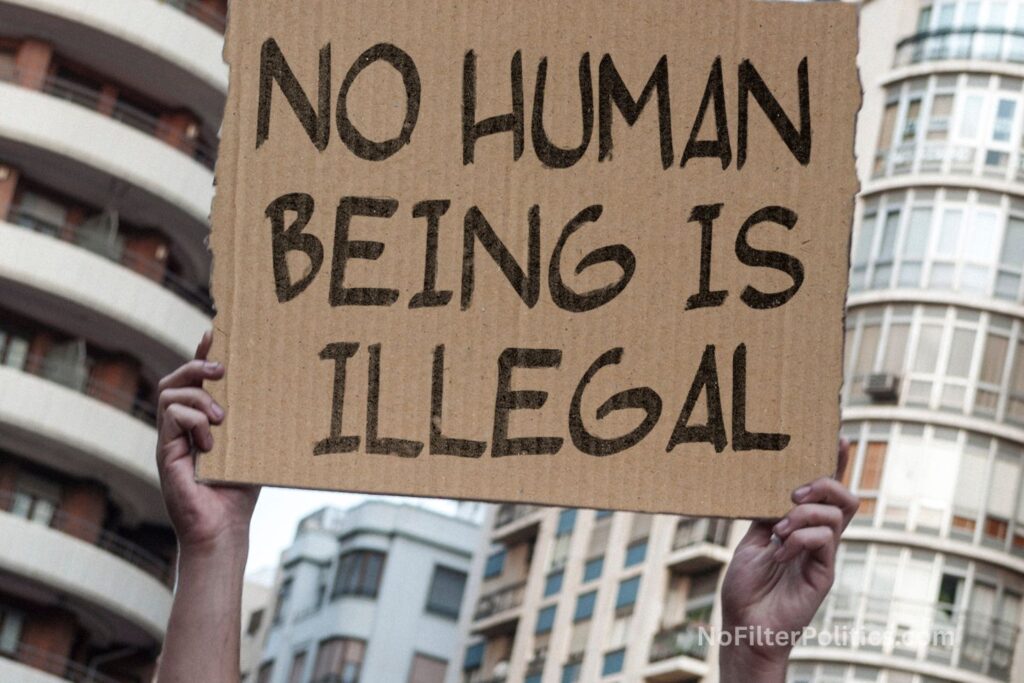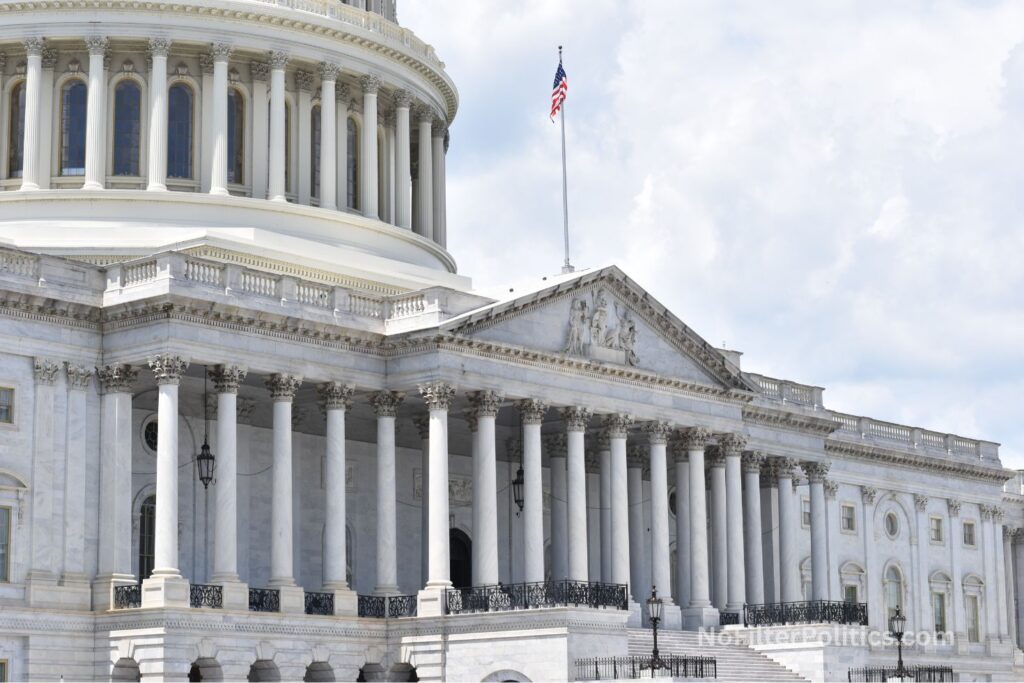Border Lines: The Divided Landscape of U.S. Immigration in 2025
The United States in 2025 faces a renewed and contentious phase in its long struggle to define the boundaries—both literal and legal—of who is allowed to enter, stay, and belong. With fresh investments in physical border infrastructure, tightened asylum rules, and ongoing efforts to restrict legal immigration pathways, the immigration debate has again become a central, polarizing issue shaping American politics, policy, and identity.
Historical Roots: How Enforcement and Legal Reform Diverged

To understand the current moment, it’s necessary to look back at the patterns that have shaped immigration policy over the past four decades. The 1986 Immigration Reform and Control Act (IRCA) marked a pivotal juncture. It provided legal status to nearly 2.7 million undocumented immigrants, with the expectation that legalization would be paired with stronger border enforcement and workplace verification.
While legalization moved forward, enforcement remained inconsistent, and no long-term verification system ever fully materialized. Over the next two decades, border security ramped up considerably—especially after the September 11 attacks in 2001—but efforts at comprehensive immigration reform failed repeatedly in Congress.
Meanwhile, state and local governments increasingly stepped into the void. Some, like Arizona, passed laws empowering local police to act as immigration enforcers. Others, like San Francisco and New York, moved in the opposite direction, limiting cooperation with federal immigration authorities. The result: a fragmented national landscape of immigration enforcement, shaped as much by geography and politics as by federal statute.
Physical Barriers: A New Chapter in Border Wall Construction

In 2025, the federal government and several states are again expanding physical barriers along the U.S.-Mexico border. This marks a continuation of a strategy that gained visibility during the Trump administration but has persisted across multiple presidencies.
Under court order and existing congressional appropriations, the Biden administration in 2023 reluctantly resumed some wall construction in Texas’s Rio Grande Valley. In 2024, contracts were awarded for an additional 230 miles of new “land and aquatic” barriers, including a mix of fencing, vehicle barricades, and surveillance infrastructure. This expansion has accelerated under the new administration inaugurated in January 2025, which has pledged to bring border infrastructure back to the forefront of national security policy.
Meanwhile, Texas initiated its own border wall project in 2021. Though ultimately defunded in mid-2025 due to cost concerns and overlap with federal construction, the Texas effort built 65 miles of barriers. While symbolic, the state-level wall underscored broader frustrations with federal immigration management.
Supporters of renewed wall construction point to its role in deterring unauthorized crossings and slowing cartel movement. Critics counter that barriers merely push migrants into more dangerous terrain, raising the death toll while doing little to address the root causes of migration or provide due process for asylum seekers.
The Transformation of Asylum Policy

Perhaps the most dramatic shift in immigration enforcement in 2025 has been the narrowing of asylum eligibility. Asylum law traditionally allowed individuals arriving at the border to request protection from persecution. That legal standard remains, but recent regulatory changes have imposed new procedural obstacles.
In May 2023, following the expiration of Title 42—a pandemic-era policy that allowed for quick expulsions—the Department of Homeland Security implemented the “Circumvention of Lawful Pathways” rule. Under this regulation, migrants who cross the border irregularly are presumed ineligible for asylum unless they first applied for protection in a third country or secured an appointment via a U.S. government mobile app (CBP One).
In mid-2024, the administration added a “border surge threshold” clause: if unauthorized crossings exceed 1,500 per day over a 28-day average, asylum processing can be temporarily suspended. That threshold has frequently been met, effectively shuttering asylum at ports of entry for extended periods.
Proponents argue these measures restore order and discourage exploitative smuggling networks. Human rights groups and legal advocates see a denial of statutory and treaty-based protections, noting that many fleeing violence and persecution have no realistic chance to navigate the new rules or secure appointments in time.
Expedited removal—deportation without a court hearing unless individuals pass a credible fear interview—has also been expanded. Combined, these policy shifts have resulted in a significant decline in asylum grants and a rising number of rapid deportations.
Legal Immigration: Pressure to Cut, Not Expand

While unauthorized immigration garners headlines, legal immigration policy is also undergoing change. Traditionally, most legal permanent residents have come through family-based petitions, refugee admissions, or employment-based categories.
Current policy proposals in 2025 aim to reduce overall legal immigration, primarily by limiting family reunification categories and increasing scrutiny of humanitarian programs like DACA (Deferred Action for Childhood Arrivals) and Temporary Protected Status (TPS).
Some proposed reforms would eliminate the Diversity Visa Lottery, cap family-based green cards at nuclear family units only, and focus future immigration on high-skilled labor needs. These changes are rooted in a long-standing argument that the U.S. system should prioritize economic utility and border security over family ties or global humanitarian obligations.
Efforts to legislate such changes have so far stalled, but executive actions and rulemaking are having a cumulative effect. Legal immigration processing remains slower than pre-pandemic levels, and applicants face increased documentation burdens. In addition, the future of DACA—covering approximately 580,000 individuals brought to the U.S. as children—remains uncertain, with litigation ongoing and the current administration signaling a possible end to renewals if courts strike it down.
Sanctuary Cities: Local Resistance and Federal Enforcement

The conflict between federal enforcement efforts and sanctuary policies in major cities has intensified. Sanctuary jurisdictions typically limit cooperation with federal immigration authorities—declining to honor ICE detainers or share certain data—on the grounds of community trust and local resource priorities.
In 2025, those policies are under strain. The federal government has deployed large-scale enforcement operations in cities like Chicago, including “Operation Midway Blitz,” which used federal agents and military infrastructure to conduct widespread arrests. City officials were not consulted, leading to legal challenges over federal overreach and questions about the use of federal personnel for domestic law enforcement.
At the same time, the migrant busing policies initiated by Texas and Florida have continued. Thousands of asylum seekers have been sent by bus to New York City, Chicago, Denver, and other major cities. These relocations, while legally permissible, have been criticized as politically motivated and poorly coordinated.
In response, cities like New York and Chicago have declared states of emergency, expanded temporary shelters, and requested federal assistance. Tensions are emerging even within progressive cities, as residents push back against the strain on public services. While local leaders reaffirm their commitment to protecting migrants, the operational and financial realities are mounting.
Migrant Rights and Humanitarian Implications

The humanitarian dimension of immigration enforcement remains a central concern in 2025. While political debate often centers on legality and enforcement, the lived experiences of migrants—particularly those seeking asylum—reveal a system under extreme stress.
Deaths along the border reached record highs in 2023 and 2024, particularly in remote desert areas where walls funnel migrants into dangerous terrain. The installation of floating barriers and razor wire along the Rio Grande by Texas authorities has led to injuries and fatalities, sparking lawsuits and federal scrutiny.
Detention conditions are also under renewed scrutiny. While the Biden administration scaled back long-term family detention in 2022, new enforcement initiatives have led to the re-expansion of expedited family deportation programs. Human rights advocates warn that children are again being placed in facilities ill-equipped to handle vulnerable populations.
Additionally, civil liberties groups have raised alarms about expedited removal proceedings, which often deny individuals access to counsel or full hearings. Allegations of racial profiling and mistaken detentions of U.S. citizens have surfaced during enforcement operations.
State-Level Divides: The Geography of Enforcement

Immigration policy in the U.S. is shaped not just by Washington but by a patchwork of state laws. In 2025, the divergence between enforcement-heavy states and integration-focused ones continues to grow.
Florida’s SB 1718, for instance, mandates E-Verify for employers, restricts driver’s licenses for undocumented immigrants, and increases penalties for transporting or sheltering those without status. Texas, Arizona, Georgia, and several others have adopted similar laws.
In contrast, California, Illinois, New Jersey, and Massachusetts have enacted policies to expand health care access, protect access to legal services, and prohibit cooperation with federal immigration enforcement beyond legal requirements. These laws reflect differing philosophies about inclusion, public safety, and the role of local government in federal immigration matters.
This divide creates a geographic disparity in immigrant rights and access to services. In some states, undocumented individuals can receive driver’s licenses, health care, and legal protection. In others, they face criminal penalties and heightened enforcement.
Political Polarization and Public Sentiment

Immigration is among the most divisive issues in American politics today. Public opinion has shifted measurably in recent years. In Gallup’s 2023 polling, 55% of Americans favored reducing immigration—a 20-point jump from a few years prior. Support for expanding the border wall crossed the 50% threshold for the first time. At the same time, broad majorities still support a path to citizenship for Dreamers and long-term undocumented residents.
This dual sentiment—security-first, yet integration-minded—reflects the complexity of American views. However, in policymaking, the emphasis in 2025 is clearly on restriction.
The 2024 election outcome, which returned a more enforcement-oriented administration to power, cemented this trajectory. Immigration enforcement, border security, and asylum reform have become defining issues for federal leadership, and partisan divides are stark. While urban and coastal areas often advocate for migrant protections, rural and border regions increasingly demand stronger control measures.
The Outlook: A Nation Still Searching for a Coherent Policy
The United States in 2025 remains without a comprehensive immigration reform law. Enforcement measures continue to expand, but legal immigration systems remain gridlocked. Humanitarian concerns are mounting, but the political consensus required to address them remains elusive.
In this environment, executive action and litigation have become the primary tools of immigration governance. Each new administration rewrites key policies, often to be reversed or challenged in court. Meanwhile, state and local governments are left to manage consequences on the ground—whether sheltering new arrivals, detaining unauthorized migrants, or resisting federal initiatives.
As the country heads deeper into the decade, the central question remains: Can the U.S. balance security and sovereignty with fairness and humanity in its immigration system? The events of 2025 suggest that achieving that balance will require not just new policies, but a broader reckoning with the country’s values, priorities, and long-term vision for who gets to become American.
References
- Bean, Frank D., and Thoa V. Khuu. The Causes and Consequences of the 1986 Immigration Reform and Control Act (IRCA). Working Paper #20207, UC Irvine Center for Population, Inequality, and Policy, October 2020. https://www.cpip.uci.edu/files/docs/CPIP%20working%20paper%2020207%20-%20Bean%20-%20IRCA.pdf
- “Chapter 1 – Purpose and Background.” USCIS Policy Manual, Volume 10, Part A, Chapter 1. U.S. Citizenship and Immigration Services. Accessed July 2025. https://www.uscis.gov/policy-manual/volume-10-part-a-chapter-1
- “Circumvention of Lawful Pathways Final Rule – Fact Sheet.” U.S. Department of Homeland Security, May 11, 2023. https://www.dhs.gov/archive/news/2023/05/11/fact-sheet-circumvention-lawful-pathways-final-rule
- “Feature Issue: Border Processing and Asylum.” American Immigration Lawyers Association. Accessed July 2025. https://www.aila.org/featured-issue-border-processing-and-asylum
- “Hoffman Plastic Compounds, Inc. v. NLRB.” Wikipedia. Accessed July 2025. https://en.wikipedia.org/wiki/Hoffman_Plastic_Compounds,_Inc._v._NLRB
- “Immigration Reform and Control Act of 1986 (IRCA).” Boston University HR Policies. Accessed July 2025. https://www.bu.edu/hr/policies/federal-and-state-laws/immigration-reform-and-control-act-irca/
- “Immigration Reform and Control Act of 1986 (IRCA).” ImmigrationHistory.org. Accessed July 2025. https://immigrationhistory.org/item/1986-immigration-reform-and-control-act/ (Immigration History)
- “Immigration Reform and Control Act of 1986 – A Latinx Resource.” Library of Congress. Accessed July 2025. https://guides.loc.gov/latinx-civil-rights/irca (Research Guides)
- “IRCA in Retrospect: Guideposts for Today’s Immigration Reform.” Migration Policy Institute, August 2016. https://www.migrationpolicy.org/research/irca-retrospect-guideposts-today-s-immigration-reform
- “Lesson 2: The Immigration Reform and Control Act and Its Aftermath.” Justice for Immigrants, accessed July 2025. https://justiceforimmigrants.org/portfolio-items/lesson-2-the-immigration-reform-and-control-act-and-its-aftermath/ (Justice for Immigrants)
- “National Immigration Project: Biden’s Asylum Ban.” National Immigration Project of the National Lawyers Guild, May 2023. https://nipnlg.org/sites/default/files/2023-05/2023_26May-Asylum-Ban-PA.pdf
- “New Asylum Rule – CBP One.” Houston Immigration Legal Services Collaborative. Accessed July 2025. https://houstonimmigration.org/the-new-asylum-rule-cbp-one/
- “US: CBP One – A Blessing or a Trap?” Amnesty International, May 2024. https://www.amnesty.org/en/latest/news/2024/05/cbp-one-mobile-application-violates-the-rights-of-people-seeking-asylum-in-the-united-states/
- “What Do President Biden’s Border Policies Mean for Asylum Seekers?” International Rescue Committee, March 2024. https://www.rescue.org/article/what-do-president-bidens-border-policies-mean-asylum-seekers
- “Weekly U.S.-Mexico Border Update: Migrant Deaths, 2024.” Washington Office on Latin America, March 22, 2024. https://www.wola.org/2024/03/weekly-u-s-mexico-border-update-migrant-deaths-2024-budget-s-b-4/
- “US-Mexico Border World’s Deadliest Migration Land Route.” International Organization for Migration, September 12, 2023. https://www.iom.int/news/us-mexico-border-worlds-deadliest-migration-land-route
- “US-Mexico Border Death Map and Database.” No More Deaths, August 4, 2025. https://nomoredeaths.org/us-mexico-border-death-map-and-database/
- “2024 Is Deadliest Year on Record for Migrants, New IOM Data Reveals.” International Organization for Migration, March 21, 2025. https://www.iom.int/news/2024-deadliest-year-record-migrants-new-iom-data-reveals
- “FL 1718: Florida Anti-Immigrant Legislation Will Affect All Florida Residents, Not Just the Undocumented.” American Immigration Lawyers Association, May 22, 2023. https://www.aila.org/fl-1718-florida-anti-immigrant-legislation
- “Top Five Things to Know About SB 1718, Florida’s New Immigration Law.” Florida Policy Institute, June 28, 2023. https://www.floridapolicy.org/posts/top-five-things-to-know-about-sb-1718-floridas-new-immigration-law
Discover more from Timothy Alexander
Subscribe to get the latest posts sent to your email.